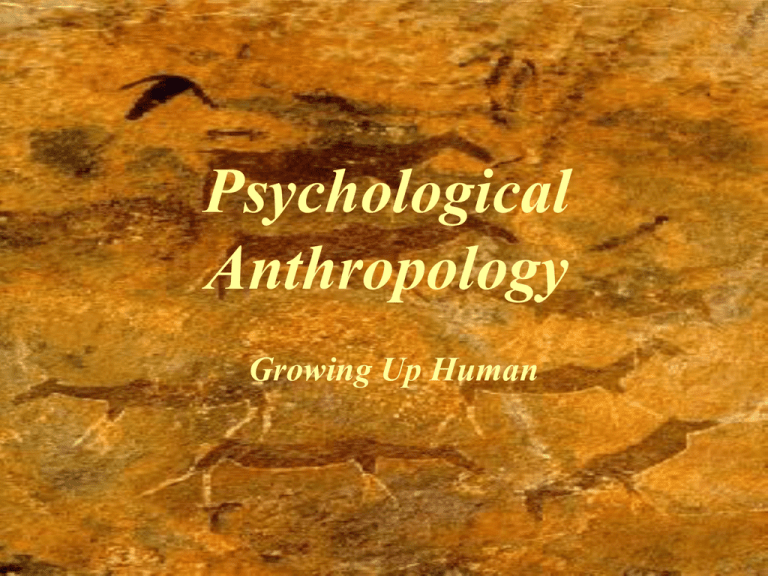
Psychological
Anthropology
Growing Up Human
ANTH 3303. PSYCHOLOGICAL ANTHROPOLOGY
Examines the interplay of culture and personality in various
Western and non-Western societies. Topics include perception,
cognition, dreams, altered states of consciousness, gender role
shifting, and psychological terrorism which are analyzed in crosscultural perspective. The question will be asked, is there a
"national character" for a modern nation? Meets Human
Diversity co-requirement… (S.M.U. Course Description)
Old Psychological Anthropology
Psychoanalysis
Developed by:
Freud emphasized:
Biological processes
and
early developmental experience.
Sigmund
Freud
Old Psychological Anthropology
Freud emphasized our animal nature: The
Id
The ID operates on the pleasure principle and demands
instant gratification but is held in check by:
The
Superego
Some of the psychic energy diverted from the ID by
conflict with the SUPEREGO becomes:
The
EGO
Ego is the conscious self, operates with reality principle.
Old Psychological Anthropology
The Notion of Insanity
• A legal term with three meanings.
• Insanity as a criminal defense.
–
–
Can’t control behavior or understand its meaning.
Alternative: Guilty but Mentally Ill
• Insanity as incompetence to stand trial.
–
Not able to participate in own defense.
• Insanity as a condition of involuntary commitment.
–
A danger to oneself or others.
Old Psychological Anthropology
Culture Specific Disorders
latah (Malaysia and Indonesia): hypersensitivity to sudden fright,
often with echopraxia, echoLalia, command obedience, and
dissociative or trancelike behavior. The Malaysian syndrome is more
frequent in middle-aged women.
windigo (Algonkian Indians, NE US and Eastern Canada): syndrome of
obsessive cannibalism, now somewhat discredited. Windigo was
supposedly brought about by consuming human flesh in famine
situations. Afterwards, the cannibal was supposed to be haunted by
cravings for human flesh and thoughts of killing and eating humans.
anorexia nervosa (North America, Western Europe): severe
restriction of food intake, associated with morbid fear of obesity.
Other methods may also be used to lose weight, including excessive
exercise. May overlap with symptoms of bulimia nervosa.
Old Psychological Anthropology
Students of Franz Boas such as Margaret Mead and Ruth
Benedict were interested in enculturation, especially the
relationship between culture and personality.
Margaret
Mead’searly
earlywork
workincluded
includedPatterns
ComingofofCulture
Age in
Ruth Benedict’s
Samoa
and
Sex and Temperament
Three
(1934) (1928)
and The
Chrysanthemum
and the in
Sword
(1945).
Primitive Societies (1935).
Old Psychological Anthropology
Nature versus Nurture: At the time Margaret Mead journeyed to Samoa in the mid1920s, scientists and scholars were engaged in an ongoing dispute over the relative
importance of biological versus socially-acquired determinants of human behavior, the socalled "nature-nurture debate." The question is still discussed today: To what extent are
human personality and behavior the products of biological factors and to what extent are
they products of cultural forces?
(Samoa: The Adolescent Girl.. http://www.loc.gov/exhibits/mead/field-samoa.html)
Old Psychological Anthropology
Margaret Mead - a great popular writer, with
tremendous contributions in fieldwork.
She found among the Arapesh a temperament for both
and
females
that
wasbook
gentle,
responsive,
and in
Mead’s
first
popular
Coming
of
Age
“males
are
the
disturbances
which
vex
our
[American]
Mead’s
secondshe
popular
Sex and
Three
societies
chose, book
the Tschambuli,
cooperative.
Samoa
was
atostudy
of the
acculturation
adolescents
dueshe
the
nature
ofArapesh
adolescence
itself
or toshe
the
In
summary,
found
toin
bewhich
Temperamentand
in Three
Primitive
Societies
was a
Mundamore,
Arapesh
occupied
the same
civilisation?
Under
different conditions,
does adolescence
addressed
the
questions:
“feminine,“
the
Mundugamore
to
be
study the
of
gender
region
of the
Newrelationship
Guinea,(now
butbetween
were found
to assign
Among
Mundugumor
Biwat),
both
males
and
present
a
different
picture?
“masculine,”
andsex
the
Tschambuli
to have
“roleand
(biology)
roles
(culture).
females
wereand
violent
and
seeking
power
quite
different
roles
toaggressive,
gender.
reversal.”
position.
For the Tchambuli (now Chambri), male and female
temperaments were distinct from each other, the woman
being dominant, impersonal, and managerial and the male
less responsible and more emotionally dependent.
Old Psychological Anthropology
Ruth Benedict - another popular writer
who made important contributions to use
of theory.
Benedict’s
firstsecond
popular
book, Patterns
of
In Benedict’s
popular
book, The
Culture.
Dependedand
in part
on a typology
Chrysanthemum
the Sword
(1946). A
ofwartime
culture study
types of
first
proposedJapanese
by
traditional
Friedrich
Nietzsche
in his
The of
Birth
culture, she
developed
heressay
concept
ofnational
Tragedy.
The types, Apollinian and
character.
Dionysian, represent rational, controlled
cultural values versus irrational,
demonstrative values.
New Psychological Anthropology
Rethinking Psychological Anthropology:
Continuity and Change in the Study of Human Action,
Second Edition by Phillip K. Bock
New Psychological Anthropology
Research themes:
Human Universals
Language - Williams Syndrome, “Motherese”
Sapir-Whorf Hypothesis
Hunters and Gatherers in Modern Post-Industrial Society
Object Permanence in children Renee Baillargeon, U. Illinois
Mental Maps
Social Cognition
“Rationality” in economic theory
Studies of “wisdom” and other aspects of aging
Mental Health
Tabula
rasa
Palimpsest
The Blank Slate has also served as a sacred scripture for
political and ethical beliefs. According to the doctrine, any
differences we see among races, ethnic groups, sexes, and
A palimpsest is a manuscript on which an earlier text has been effaced and the vellum
individuals
from differences
inpractice,
their innate
or parchmentcome
reusednot
for another.
It was a common
particularly in medieval
constitution
but from
in their
experiences.
ecclesiastical circles,
to rubdifferences
out an earlier piece
of writing
by means ofChange
washing or
scraping
the manuscript, reforming
in order to prepare
it for a new
text. The motive
for making
the
experiences—by
parenting,
education,
the media,
palimpsests seems to have been largely economic--reusing parchment was cheaper
and
rewards—
thansocial
preparing
new skin. and you can change the person.
Underachievement, poverty, and antisocial behavior can be
ameliorated; indeed, it is irresponsible not to do so
New Psychological Anthropology
Evolution of Human Central Nervous System (CNS)
Modern Human - 1500, Modern Gorilla - 500cc.
100,000 BP Mod Humans - 1500 cc Average skull capacity.
(Includes Neanderthal, Cro-Magnon, etc.)
1.0 mBP Pithecanthropus - 900 cc Average skull capacity.
3.5 mBP Australopithecus - 600 cc Average skull capacity.
New Psychological Anthropology
Central Ideas (Leda Cosmides and John Tooby)
The brain is a physical system designed to generate
behavior that is appropriate to environmental
circumstances.
Modules
fordesigned
language,
sexual selection
attraction,
Our neural circuits
were
by natural
to
emotion,
etc. during our
solve problems
that ourmapping,
ancestors faced
species' evolutionary history.
William James called this “instinct blindness.”
Consciousness is just the tip of the iceberg; most of what goes
on in your mind is hidden.
Different neural circuits are specialized for solving different
adaptive problems.
In
short,
we are
hunter-gatherers
in amind.
modern,
Our
modern
skulls
house a stone age
post industrial world.
New Psychological Anthropology
Social Cognition
The brain's social cognition systems are sufficiently complex
and flexible to handle many novel circumstances. Most people (apart
from some political extremists), for example, have the ability to see a
situation from another person's point of view. Understanding the other
person's thoughts is the key to appropriate social behavior. And the brain
seems to have pieced together a clever system for doing so.
One part involves judging facial expressions. Mistaking a grimace for a
grin can lead to a serious faux pas. Thus the amygdala, an
almond-shaped clump of cells on each side of the brain, is tuned to signs
of danger on someone's face. Amygdala activity goes up when people
see faces expressing fear; people with damaged amygdalas fail to detect
fearful expressions. Amygdalas are overactive in people with social
phobias.
New Psychological Anthropology
Market Pricing
Examples
property that can be bought, sold, or treated as
Social are
Cognition
investment capital (land or objects as MP), marriages organized
Four models
forin coordination
interaction:
contractually
or implicitly
terms of costs andof
benefits
to the partners,
Authority Ranking
Communal
Sharing
Communal
Sharing
people treat group
prostitution
(sex
as
MP),
bureaucratic
cost-effectiveness
standards
Examples
are
military
hierarchies
(AR
in
decisions,
control,
and many
Alan
Page
Fiske
of
the
Center
for
Culture,
Brain,
Examples
are
people
using
a
commons
(CS
with
respect
to
members
as MP),
equivalent
and undifferentiated
(resource
allocation
as
utilitarian
judgments
about
the
greatest
Equality
Matching
other
matters),
ancestor
worship
(AR
in
offerings
of
filial
piety
and
and
Development
at
UCLA.
Faculty
utilization
of
the
particular
resource),
people
intensely
in
love
(CS
good
for
the
greatest
number,
or
standards
of
equity
in
judging
Examples
include
sports
and
games
(EM
with
expectations
of
protection
and
enforcement
of
norms),
monotheistic
participants
come
from
UCLA
programs
in not
Authority
Ranking
people
have
unequal
with
respect
to
their
social
selves),
people
who
"ask
for whom
entitlements
in
proportion
to
contributions
(two
forms
of
morality
as
respect
to
the
rules,
procedures,
equipment
and
religious
moralities
(AR
for
the
definition
of
right
and
wrong
by
Psychology,
Anthropology,
Psychiatry,
Brain
positions
in
a linear
Alan
Page
Fiske’s
Relational
models
posits
that
the
bell
tolls,
for it of
tolls
for hierarchy
thee"
(CStheory
with
respect
topeople
shared
MP),
considerations
"spending
time"
efficiently,
and
estimates
ofor
terrain),
baby-sitting
coops
(EM
with
respect
to
commandments
or
will
of
God),
social
status
systems
such
as
class
Mapping,
Neuroscience,
Applied
Linguistics,
use four elementary
models
to organize most
aspects
of social
suffering
and
common
well-being),
or people
who
kill any member
expected
kill
ratios
(aggression
as
MP).
the
exchange
of
child
care),
and
restitution
inethnic
rankings
(AR
with
respect to social
of identities),
and
Education.
Equality
Matching
people value
keep track
of the
interaction
in
all
societies.
of
anand
enemy
group
indiscriminately
in retaliation
for
an attack
(CS
kind such
(EMbalance
with
respect
tostandings
righting
a(AR
wrong).
or difference
among participants
rankings
as
sports
team
with respect to collective responsibility). with respect to prestige).
Market Pricing relationships are oriented to
socially meaningful ratios or rates


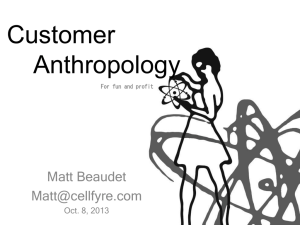

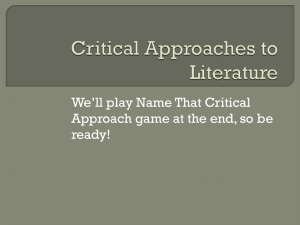
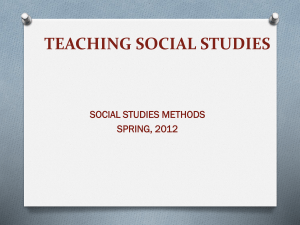
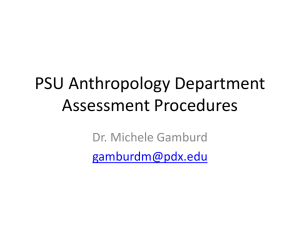


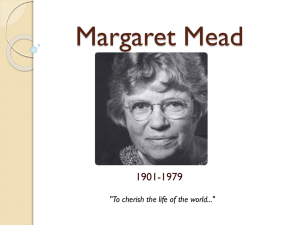
![4[1]._a_man_as_a_person](http://s2.studylib.net/store/data/005226893_1-b67b2be2c3623c1c44b6baa80b997c62-300x300.png)